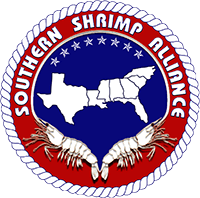On July 15, 2013, the U.S. Food and Drug Administration (FDA) added Ngoc Tri Seafood Joint Stock Company to Import Alert 16-124 (“Detention Without Physical Examination of Aquaculture Seafood Products Due to Unapproved Drugs”) for shrimp products because of chloramphenicol. The addition of company to the Import Alert followed the FDA’s reporting that seven entry lines of vannamei and black tiger shrimp from Ngoc Tri Seafood had been refused on June 20, 2013 because of veterinary drug residues.
The FDA’s actions were the latest in a series of findings of contaminated shrimp shipments originating from Ngoc Tri Seafood. In an October 5, 2011 letter, the Southern Shrimp Alliance informed the FDA that Ngoc Tri Seafood was then listed on the Canadian Food Inspection Agency’s Mandatory Inspection List, both for the detection of quinolones (another banned antibiotic) and a net weight determination. In January of this year, Japan’s Ministry of Health, Labour, and Welfare reported that a shipment of shrimp from Ngoc Tri Seafood had been found to contain chloramphenicol, the same antibiotic that would lead to the company’s inclusion on the FDA Import Alert six months later.
The repeated findings of banned antibiotics in shrimp shipments from Ngoc Tri Seafood are not surprising. Local press accounts indicate that seafood processors in Vietnam recognize that Vietnamese shrimp farmers resort to the use of antibiotics to protect their crops, but that there is little effective control over such practices. One Vietnamese news report from March 2012 discussed the problem:
Duong Ngoc Minh, General Director of Hung Vuong Seafood Company, said that when shrimp and fishe[s] get diseases, farmers would have to treat them with medicine in order to protect their assets. . . .
Also according to Minh, 95 percent of the materials for shrimp processing comes from farmers. Therefore, it is difficult for enterprises to control the quality of shrimp products.
All of which raises an obvious question: Why would any American importer source from Ngoc Tri Seafood?
One reason: the “Ngoc Tri Seafood JSC Group,” including Ngoc Tri Seafood Joint Stock Company is currently certified as a “2 Star Production Group” by the Global Aquaculture Alliance’s (GAA) Best Aquaculture Practices program. According to the GAA, that certification is geared towards seafood processing plants with shrimp, tilapia, catfish, pangasius, and salmon farms. An importer, distributor, retailer, or restaurant relying on a BAP certification would have no indication of Ngoc Tri Seafood’s checkered history, although a simple internet search (or checking the links compiled at the Southern Shrimp Alliance’s “Check Your Supplier” webpage) would reveal the issues.
Which raises another obvious question: What is the real value of certification?
John Williams
Review Import Alert 16-124 here: http://www.accessdata.fda.gov/cms_ia/importalert_27.html
Review the FDA’s refusals of fishery/seafood products during the month of June 2013 here: http://www.accessdata.fda.gov/scripts/importrefusals/ir_selection.cfm?DYear=2013&DMonth=6&IndustryCode=16
Review SSA’s October 5, 2011 letter to the FDA regarding Vietnamese shrimp imports: https://shrimpalliance.com/wp-content/uploads/2011/10/10-5-11-letter-to-FDA-re-Vietnamese-Seafood-Imports1.pdf
Review Japan’s Ministry of Health, Labour, and Welfare’s excel spreadsheet of food violations found in January 2013: http://www.mhlw.go.jp/english/topics/importedfoods/13/xls/13-01a.xls
Read VietNamNet “Vietnam Still Remains Puzzled With Seafood Antibiotic Residue Control” (March 13, 2012): http://dtinews.vn/en/news/017002/21467/vietnam-still-remains-puzzled-with-seafood-antibiotic-residue-control-.html
Review the GAA’s BAP list of 2 Star Production Groups: http://www.aquaculturecertification.org/index.php?option=com_content&task=view&id=124&Itemid=107
